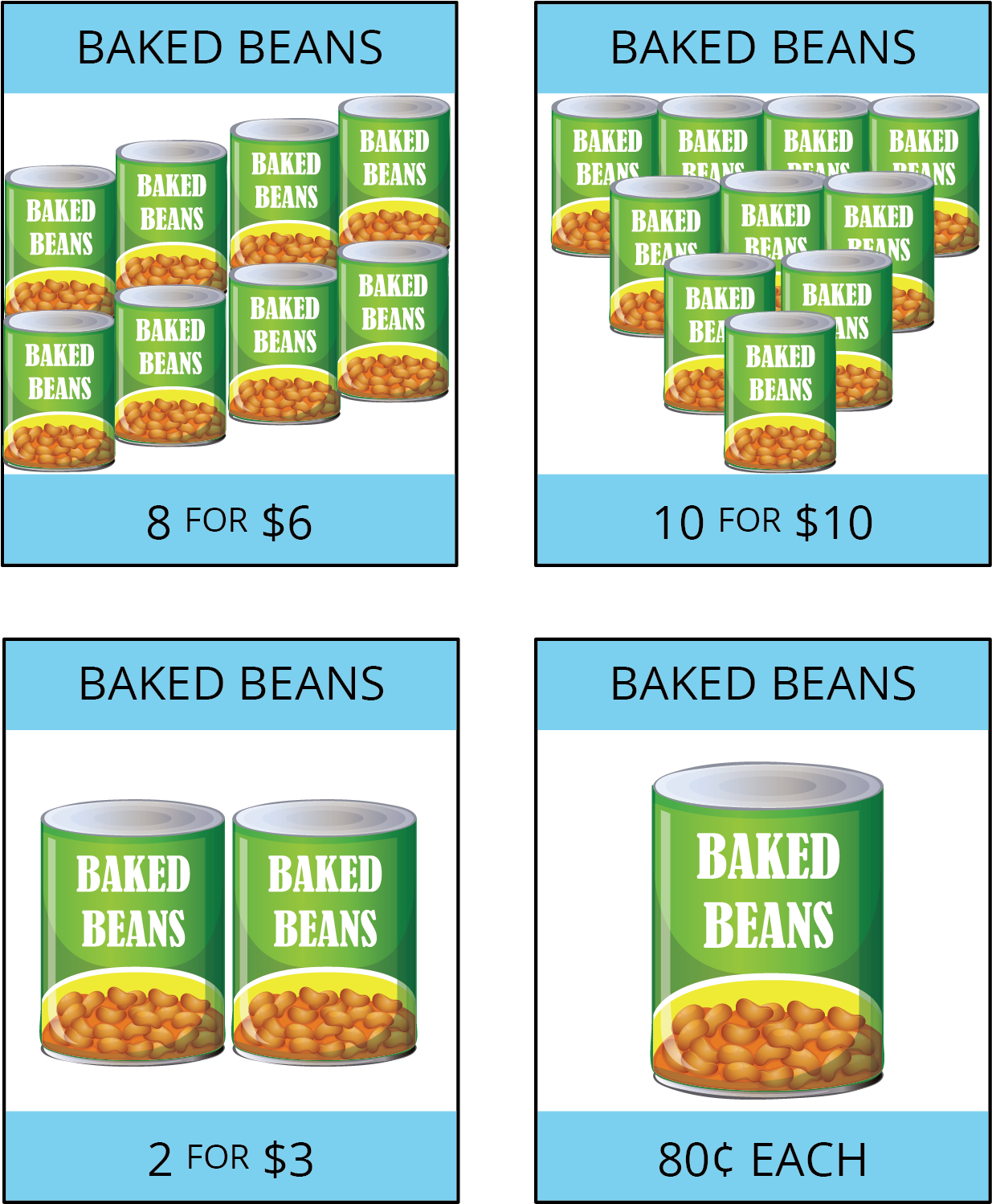5.1: Closest Quotient
Is the value of each expression closer to \frac12, 1, or 1\frac12?
- 20\div 18
- 9\div 20
- 7\div 5
Let’s compare some speeds and some prices.
Is the value of each expression closer to \frac12, 1, or 1\frac12?
Some students did treadmill workouts, each one running at a constant speed. Answer the questions about their workouts. Explain or show your reasoning.
What is the same about the workouts done by:
Tyler and Kiran each started running at a constant speed at the same time. Tyler ran 4,200 meters in 30 minutes and Kiran ran 6,300 meters in \frac12 hour. Eventually, Kiran ran 1 kilometer more than Tyler. How much time did it take for this to happen?
Four different stores posted ads about special sales on 15-oz cans of baked beans.

Diego ran 3 kilometers in 20 minutes. Andre ran 2,550 meters in 17 minutes. Who ran faster? Since neither their distances nor their times are the same, we have two possible strategies:
Find the distance each person traveled in the same time. The person who traveled a longer distance in the same amount of time is faster.
It is often helpful to compare distances traveled in 1 unit of time (1 minute, for example), which means finding the speed such as meters per minute.
| distance (meters) | time (minutes) | |
|---|---|---|
| row 1 | 3,000 | 20 |
| row 2 | 1,500 | 10 |
| row 3 | 150 | 1 |
| distance (meters) | time (minutes) | |
|---|---|---|
| row 1 | 2,550 | 17 |
| row 2 | 150 | 1 |
Both Diego and Andre ran 150 meters per minute, so they ran at the same speed.
Finding ratios that tell us how much of quantity A per 1 unit of quantity B is an efficient way to compare rates in different situations. Here are some familiar examples: